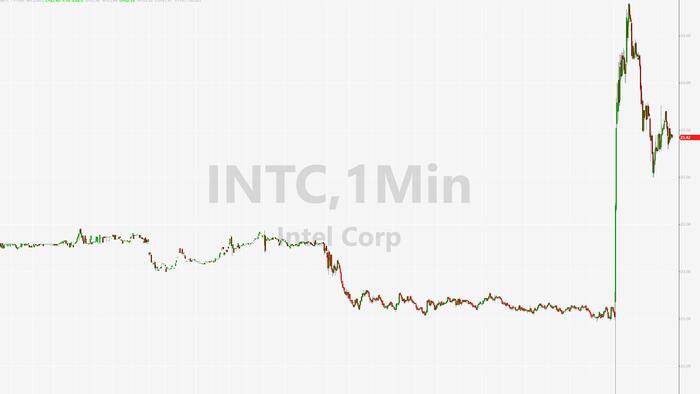During an earnings call, Intel CEO Pat Gelsinger acknowledged the slower-than-anticipated adoption of the company’s AI accelerator, Gaudi, leading to a missed target of $500 million for AI accelerators. Despite the challenges, Intel shares surged in after-hours trading following a quarterly report that, while not stellar, was deemed not as detrimental as prior predictions. The company’s previous earnings report had resulted in a steep drop in share prices, but the latest results indicate potential areas of improvement within their business.
Intel reported a third-quarter adjusted earnings per share loss of 46 cents, significantly worse than the expected 2 cents loss identified by Wall Street analysts. This stark difference arises mainly due to substantial restructuring charges, totaling nearly $19 billion that impacted overall profitability. While these results seem disheartening, the revenue for the quarter of $13.3 billion surpassed analyst expectations of $13.02 billion. The higher revenue demonstrates some recovery in key business segments, showing that the firm is potentially stabilizing after a bumpy period.
Looking ahead, Intel has raised its revenue guidance for the fourth quarter to between $13.3 billion and $14.3 billion, slightly below the $13.6 billion average prediction from analysts. The company is also projecting earnings of 12 cents per share, an improvement compared to the previously anticipated 6 cents. This optimistic outlook reflects a rebound in certain segments, particularly in sales from data-centered and AI units, which grew by 9% to reach $3.3 billion after previously struggling.
The recent data indicates a decline in revenue for the client group, primarily composed of PCs, which saw a drop of 7% to $7.3 billion. However, sales in the data center and AI unit showed a notable increase, reinforcing Intel’s efforts to pivot toward high-growth areas within the tech industry. Simultaneously, the network and edge revenue exhibited a modest rise of 4% to $1.5 billion, underscoring a broader diversification in Intel’s portfolio even amid declining segments.
Intel’s third-quarter results also revealed a concerning decline in adjusted gross margin, falling to 18% compared to the previous quarter’s 38.7%, and notably below the company’s target of 38%. Chief Financial Officer David Zinsner noted that the restructuring charges significantly affected profitability, emphasizing that these strategic cost-cutting measures are crucial for Intel’s future. The company’s announced plans to cut 16,500 jobs as part of broader cost and capital reduction initiatives highlight its commitment to stabilizing and reinvigorating its operational framework.
In conclusion, while Intel faces considerable challenges in terms of revenue and declining margins, the latest earnings report suggests glimmers of hope and progress. The company’s ability to surpass revenue expectations and raise guidance, coupled with growth in key segments like data centers and AI, point toward a potential turnaround. However, the struggles in the client group and overall profitability highlight the steep path ahead for Intel as it continues to streamline operations and refocus on emerging technology markets. CEO Pat Gelsinger’s comments reflect a cautious optimism for the firm’s future as it navigates these transitional times.

